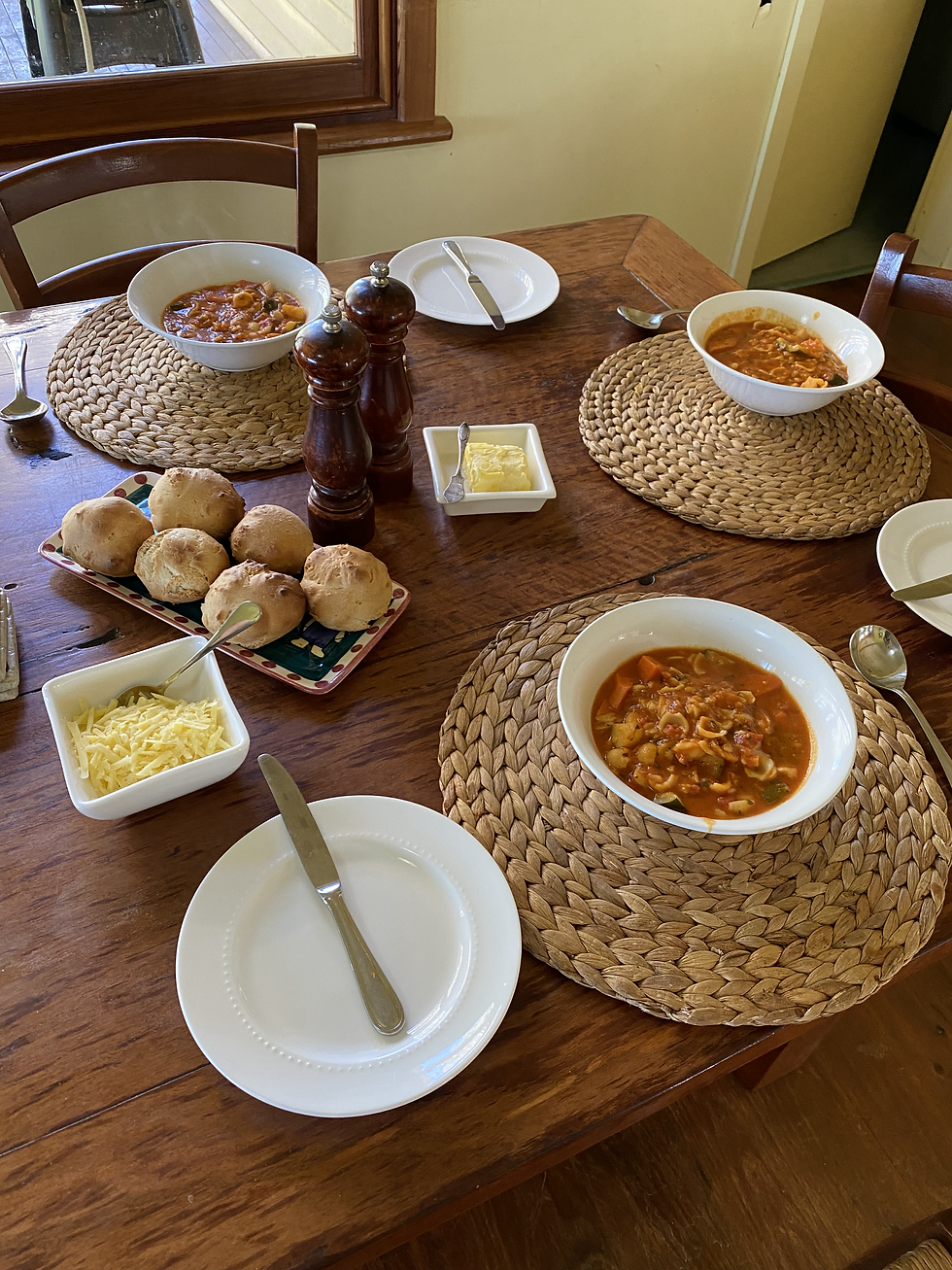The Farmify Team on the Road - Trip to Jerilderie
- Tina Griffin-Hunt

- Jun 29, 2021
- 4 min read
Updated: Jul 1, 2021
Last week Christopher and I were lucky enough to take a trip out to Jerilderie to visit Fiona, a great friend of ours who is running the family farm.
Wet!
Fiona has two lateral irrigation lines covering an area of 1.6 x 7 kilometers. She currently has canola on half the area and wheat on the other half. Both crops sit on both red and grey soil. One of Fiona’s challenges is that when ordering water from their license she needs to decide on the amount needed three weeks prior to using it. As you can imagine, predicting the optimal amount of water can be difficult normally but made even more so considering this lead time.
Red Soil Grey Soil
When talking through this with Fiona and with the help of her agronomist we made a plan. Like many remote properties, Fiona’s has limited internet coverage across the farm so a LoRaWAN set up is the best option for her. The solution in this situation was to use a soil moisture sensor in each of the four parts of the field; one in each of the red and grey soils for the wheat crop and one in each of the red and grey soils for the canola.
We chose an integrated soil moisture monitoring station which includes an Enviropro Sensor to provide measurements of Volumetric Soil Water content % (VSW) at 10cm intervals (to 80cm) along with soil temperature.The set-up also includes an SNODE with LoRaWAN communications, a 6.5Ah rechargeable liion battery, a 10W solar panel and a mounting system for the node and solar panel.
Along with the soil moisture stations we needed a weather station, most particularly one that would capture rainfall, humidity, temperature and wind speed. We sourced this from ICT International and went with the SNiP-WS24-ML weather station which measures all this and has a rainfall resolution of 0.2mm.
Our goal at Farmify is to make sure the system is easy enough for farmers to set up themselves - this trip certainly proved this to be the case. Fiona’s manager, Brandan, was all over it. When we got to Jerilderie we found they had received a significant amount of rain (around 36mm) and so the field was at field capacity so we had lots of fun squelching around and digging holes using a hand auger, which certainly got the heart rate up, particularly for Brandan who did most of the digging.
Soil at Field Capacity The EnviroPro Soil Moisture Sensor
Soil Moisture Station set up in the red soil part of the wheat crop
Red Soil part of the Canola Crop Fiona showing how it is done!

Once the four soil moisture probes were in place we set about installing the weather station. A simple set up - two star pickets; on one we attached the temperature and and humidity sensor along with the sonic anemometer and on the second picket we mounted the rain gauge, solar panel and SNode. Currently there is no livestock in this paddock so this setup was fine for now however the plan is to fence this off down the track when stock will be using the paddock.

After all this excitement it was time for a hearty lunch - I just had to include the photo because this lunch was an absolute winner on a chilly day. Homemade minestrone soup and bread rolls - lucky us!
After lunch it was time to mount the LoRaWAN antenna on the side of the machinery shed which was located about 100 metres from the main house. This had already been extremely well planned out by Brandan and it was an absolute treat to watch the mounting of the antenna and pole take place.
Brandan had welded a corner bracket onto a metal pole of about 5 meters in length. We attached the antenna to the top of the pole using the U-bolts provided and taped then cable tied the Cat 5e cable down the rest of the pole.
With safety gear on, Brandan was then lifted with the pole (now horizontal) via a metal crate and forklift. Our trusty forklift driver lined it up perfectly allowing the corner piece to slide on to the shed’s metal corner post. With a few adjustments here and there Brandan was then able to screw the corner bracket into place resulting in the antenna being at around 10m high. This really was a precision exercise and we were all very impressed with the way Brandan had planned this out.
After this the Multitech outdoor LoRaWAN gateway with 4G and high gain antenna was hooked up and we were off. Remote farm monitoring was ready to go!
Below are some pictures of the Farmify dashboard as it currently stands and we have had some great feedback from Fiona and her team regarding the best setup for the dashboard. The Farmify team are now busily working on how to optimise the data collected from the soil moisture monitors and weather stations. We will keep you up to date with the progress.


Farmify Dashboard showing all 8 levels on all four soil moisture sensors

Farmify Dashboard filtering to show the 8 levels on one of the soil moisture sensors
We would love to hear from you if you have any questions whatsoever about this story or about Farmify’s farm monitoring solution in general - we always love a chat!
Some final pictures of beautiful Jerilderie:















































Comments